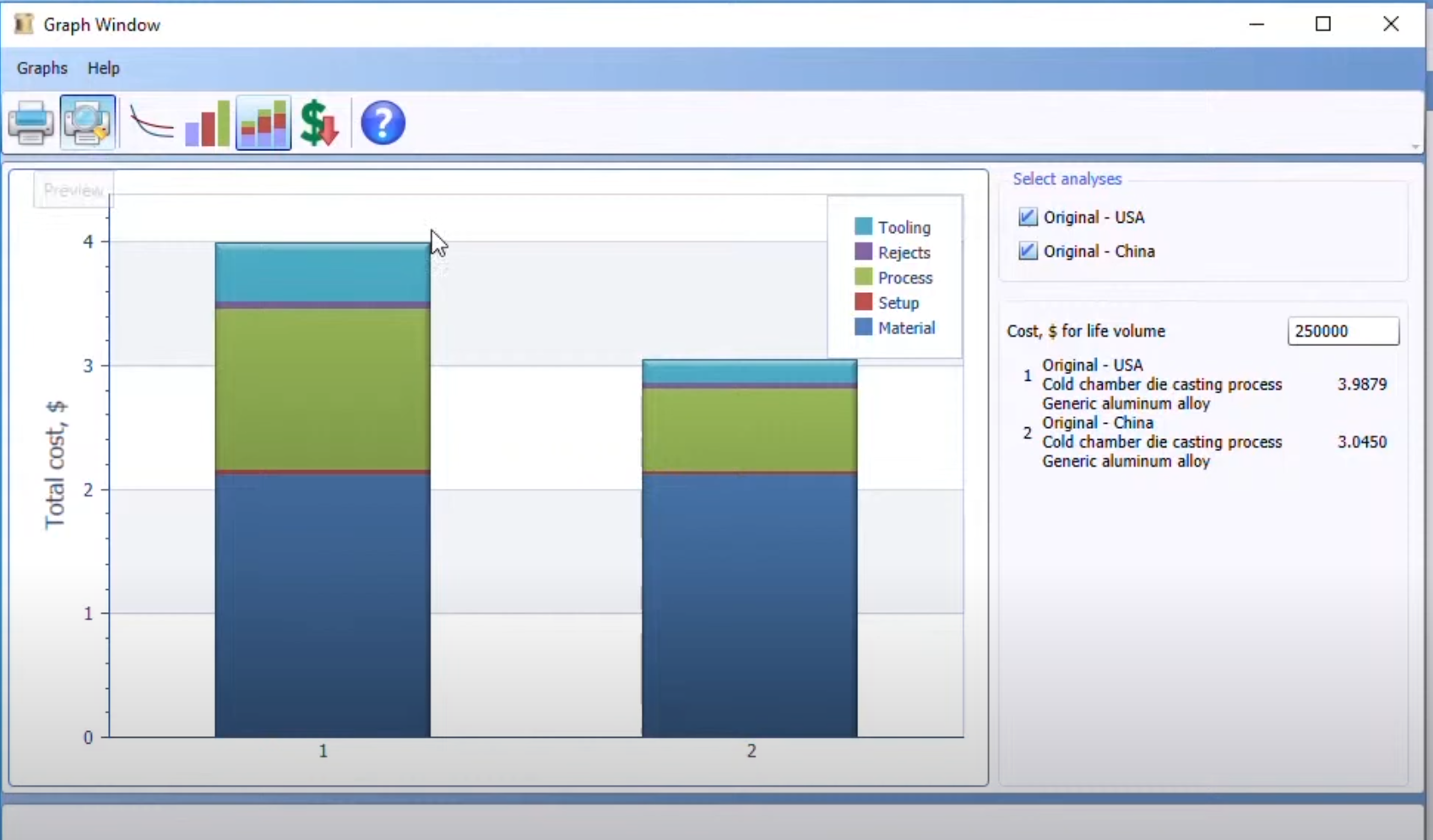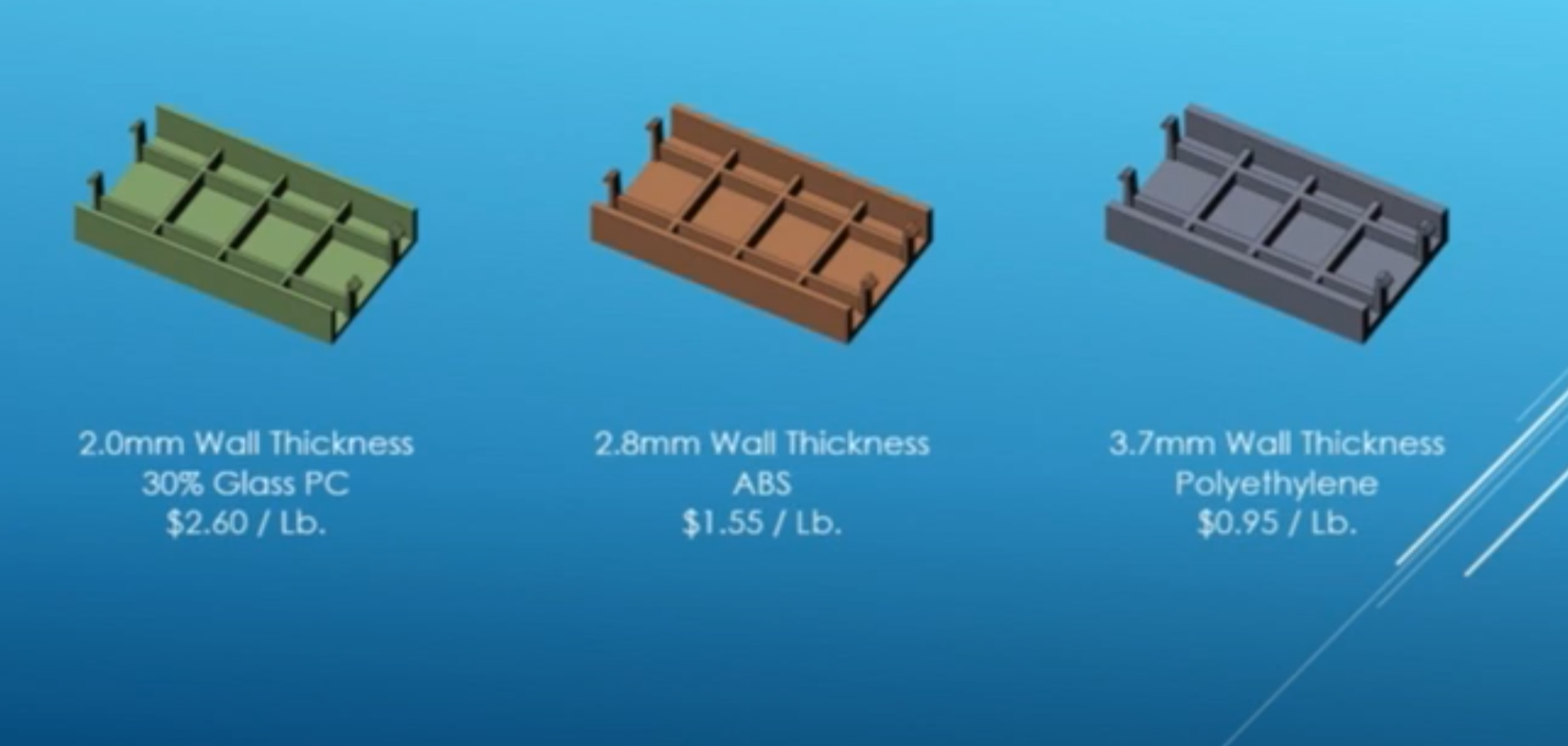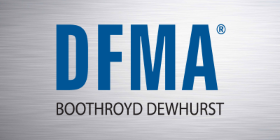
Benefits: Design cost-effective parts and products during the early stages of development
Strategy: Break the walls that exist between design and manufacturing
Design for Manufacturing (DFM) is a product development strategy that allows companies to anticipate and influence manufacturing costs during the earliest stages of product development. Since it is widely accepted that over 70% of product cost is locked-in during the design phase, it is extremely important that designers and manufacturers collaborate to ensure total product cost goals will be met. The problem is that the typical product development team operates in a “toss it over the wall” fashion. That is to say that the design team is sitting on one side of a wall and the manufacturing team on the other. Once the design is finished, it gets tossed to the manufacturing team in a manner that doesn’t allow for any collaboration. A first-class product development team will instead implement Product Costing to avoid lengthy re-design efforts and missed cost reduction opportunities that result from the more typical approach.
What Does an Effective Design for Manufacturing Process Look Like?

The first stage of Design for Manufacturing is where the design engineers provide specifications for the parts they have decided to include in the product structure. Ideally, a Product Simplification strategy will have been used to help achieve this. Using these part design specifications, the manufacturing engineers can provide feedback as to what is actually involved in bringing the designs to life. This combination of design and manufacturing information allows for accurate cost estimates to be generated in DFM Concurrent Costing software. At this point, the designers go back to their initial proposals and finalize the selection of processes and materials, as well as fine-tune the parameters of each design. The goal is to achieve the lowest cost design for each finalized part that is still able to meet the functional requirements of the product.
What Benefits Does DFM Concurrent Costing Provide During This Process?
Besides providing real-time accurate cost estimates, DFM Concurrent Costing serves as the focal point of communication between designers and manufacturers. DFM identifies the major cost drivers for each manufacturing process so that both manufacturing and design can ask the essential cost-related questions at the most relevant time. This results in a faster product development process because there are fewer problems to address during the latter stages of development. With Product Costing, product development becomes a more focused and educated effort than previously.
What an Effective Design for Manufacturing Process Looks Like
An effective DFM process is characterized by its structured approach, collaborative environment, and continuous improvement ethos. Below are the key elements that define an effective DFM process.
Integrated Teams
Successful DFM relies on integrated teams where designers, manufacturing engineers, and other stakeholders work collaboratively from the outset. This integration ensures that all perspectives are considered, leading to more holistic and optimized designs.
Iterative Feedback Loops
Continuous feedback loops between design and manufacturing teams facilitate ongoing improvements and refinements. Iterative feedback allows for the identification and resolution of issues in real-time, enhancing the overall quality and cost-effectiveness of the product.
Advanced Costing Tools
Utilizing advanced costing tools, such as DFM Concurrent Costing software, provides accurate and real-time cost estimates. These tools enable teams to make informed decisions based on comprehensive cost analyses, ensuring that budgetary goals are met without compromising on quality.
Standardized Processes
Standardizing design and manufacturing processes promotes consistency, efficiency, and scalability. Standardization reduces variability, minimizes errors, and facilitates easier training and onboarding of new team members.
Continuous Improvement
An effective DFM process embraces a culture of continuous improvement, encouraging teams to seek out and implement innovative solutions that enhance manufacturing efficiency and reduce costs. This proactive approach ensures that the DFM process remains dynamic and adaptable to evolving market demands and technological advancements.
DFM Concurrent Costing: Enhancing Communication and Cost Management
Real-Time Accurate Cost Estimates
One of the primary advantages of DFM Concurrent Costing is its ability to generate real-time, accurate cost estimates. By integrating design and manufacturing data, Concurrent Costing software provides immediate feedback on the cost implications of design choices. This real-time visibility enables teams to make informed decisions swiftly, ensuring that cost objectives are met without delaying the development process.
Focal Point of Communication
DFM Concurrent Costing serves as the central hub for communication between designers and manufacturers. It facilitates the exchange of vital information, ensuring that both teams are aligned in their cost reduction and efficiency goals. This centralized communication platform minimizes misunderstandings and fosters a collaborative environment where cost-related issues can be addressed promptly and effectively.
Identification of Major Cost Drivers
DFM Concurrent Costing tools are adept at identifying the major cost drivers associated with each manufacturing process. By pinpointing these key factors, teams can focus their efforts on areas that offer the most significant cost-saving opportunities. Understanding cost drivers allows for targeted interventions and strategic planning, enhancing overall cost management.
Timely Cost-Related Queries
With DFM Concurrent Costing, design and manufacturing teams can raise essential cost-related questions at the most relevant times in the development cycle. This timely inquiry ensures that cost considerations are integrated into the decision-making process, preventing costly oversights and enabling proactive cost management.
Accelerated Product Development
The streamlined communication and accurate cost management facilitated by DFM Concurrent Costing result in a faster product development process. By reducing the number of issues that need to be addressed in the later stages of development, teams can avoid delays and keep the project on track. This acceleration is crucial in competitive markets where time-to-market can significantly impact a product's success.
Focused and Educated Product Development
DFM Concurrent Costing transforms product development into a more focused and educated effort. Teams are equipped with the necessary tools and information to make strategic decisions that align with cost and quality objectives. This informed approach enhances the overall efficiency and effectiveness of the product development process, leading to better outcomes and higher-quality products.
Implementing Design for Manufacturing in Your Organization
Foster a Collaborative Culture
Encourage a culture of collaboration and open communication between design and manufacturing teams. Promote mutual respect and understanding of each team's expertise and contributions. Regular cross-functional meetings and joint training sessions can help build strong working relationships and enhance team cohesion.
Invest in Training and Tools
Provide training to team members on DFM principles, methodologies, and tools. Investing in advanced DFM software, such as Concurrent Costing tools, equips teams with the resources they need to effectively integrate design and manufacturing processes. Continuous learning and development ensure that teams remain adept at leveraging DFM strategies to their fullest potential.
Establish Clear Processes and Standards
Develop and implement clear processes and standards for DFM. Define roles and responsibilities, establish standardized procedures for design and manufacturing collaboration, and set clear expectations for cost management and quality assurance. Consistent processes and standards promote efficiency and ensure that all team members are aligned in their efforts.
Utilize Cross-Functional Teams
Create cross-functional teams that include members from design, manufacturing, engineering, and other relevant departments. These teams facilitate the exchange of diverse perspectives and expertise, leading to more comprehensive and optimized product designs. Cross-functional collaboration is essential for identifying and addressing potential manufacturing challenges early in the development process.
Continuously Monitor and Improve
Regularly review and assess the effectiveness of the DFM process. Gather feedback from team members, analyze performance metrics, and identify areas for improvement. Embrace a mindset of continuous improvement, seeking out innovative solutions and best practices that can enhance the DFM strategy and drive ongoing cost reductions and efficiency gains.
Conclusion
Design for Manufacturing is an indispensable strategy for companies aiming to develop cost-effective, high-quality products in a competitive market. By fostering collaboration between design and manufacturing teams, implementing robust product costing methodologies, and utilizing advanced tools like DFM Concurrent Costing software, organizations can significantly reduce manufacturing costs, accelerate product development, and enhance overall product quality.
Adopting DFM requires a cultural shift towards integrated teamwork, continuous improvement, and strategic decision-making. However, the benefits—ranging from cost savings and faster time to market to improved product quality and increased innovation—make it a worthwhile investment for any forward-thinking organization.
Embracing Design for Manufacturing not only optimizes the production process but also positions companies to better meet market demands, respond to customer needs, and achieve long-term success in an ever-evolving business landscape.
Ready to optimize your manufacturing process with Design for Manufacturing? Contact Us Today to get started!





 Learn the Basics of DFM
Learn the Basics of DFM

